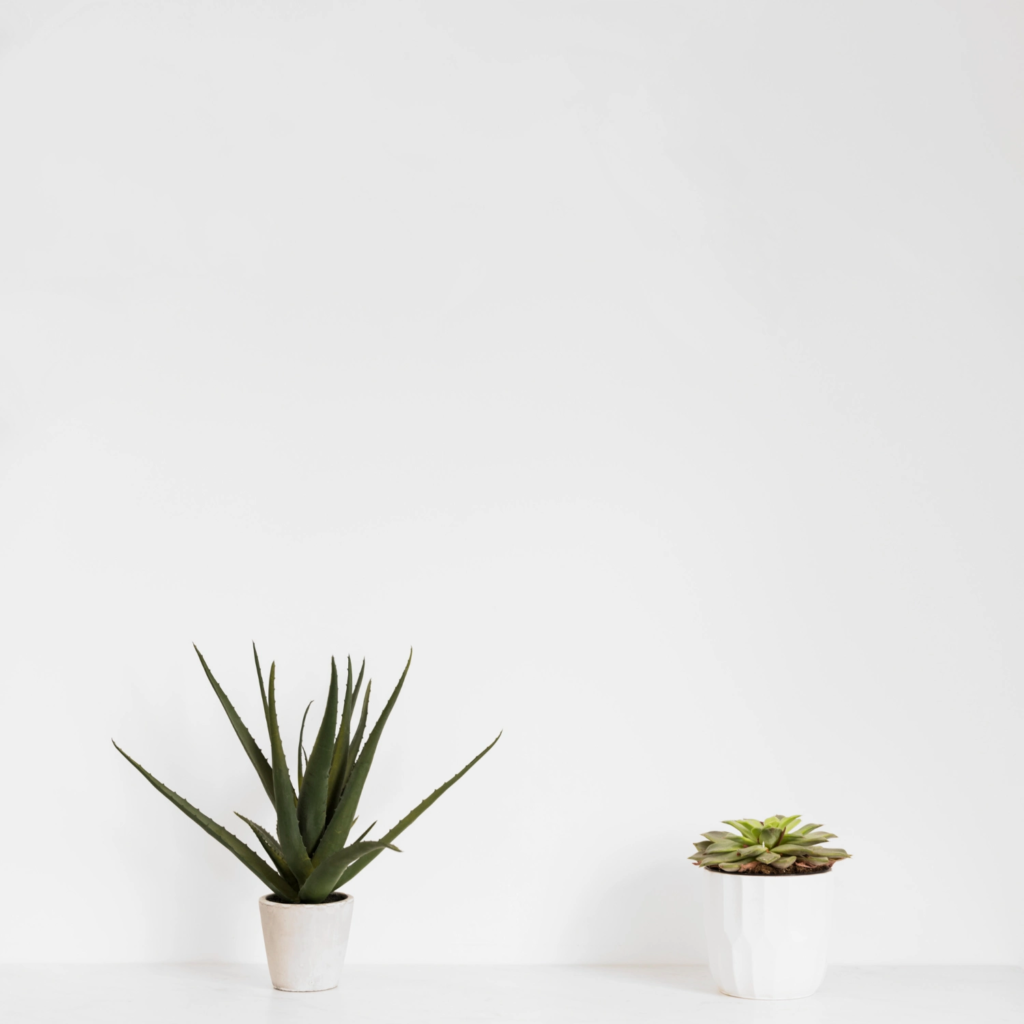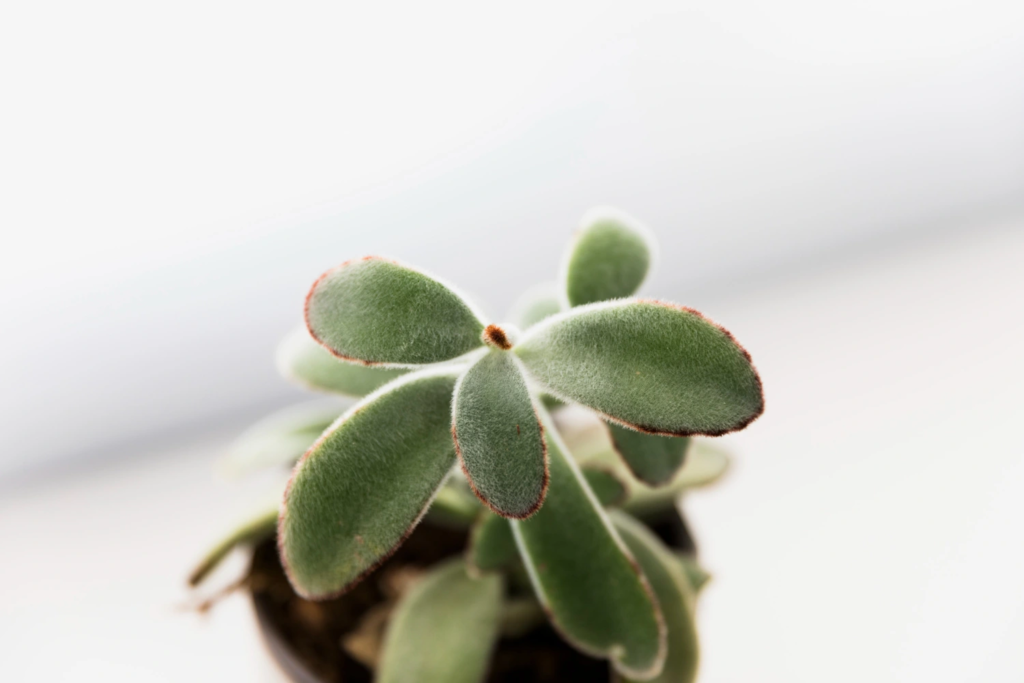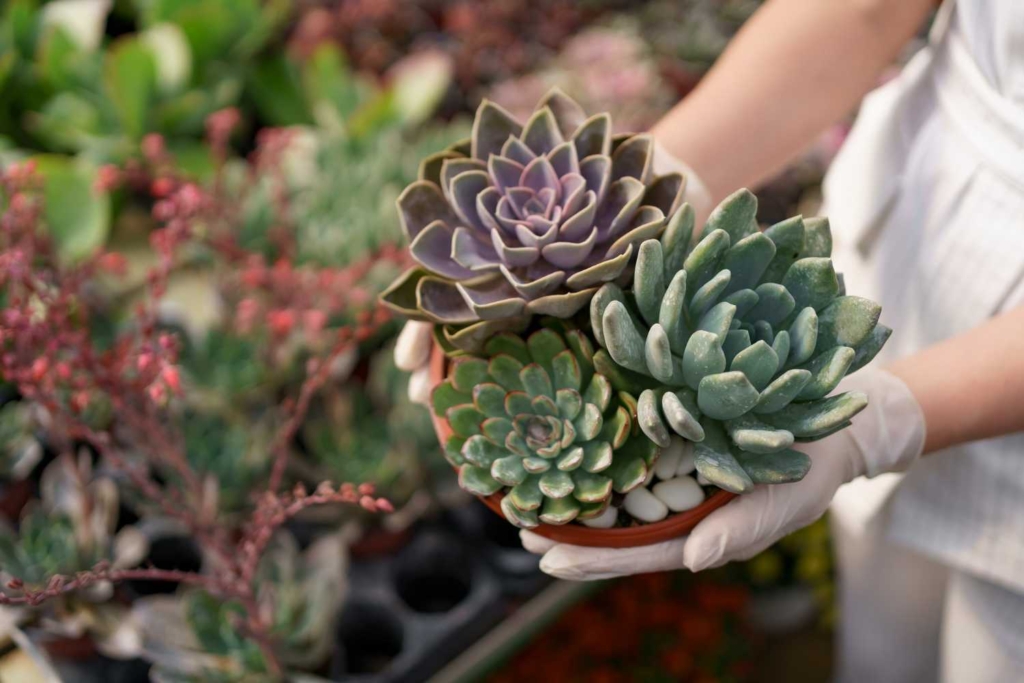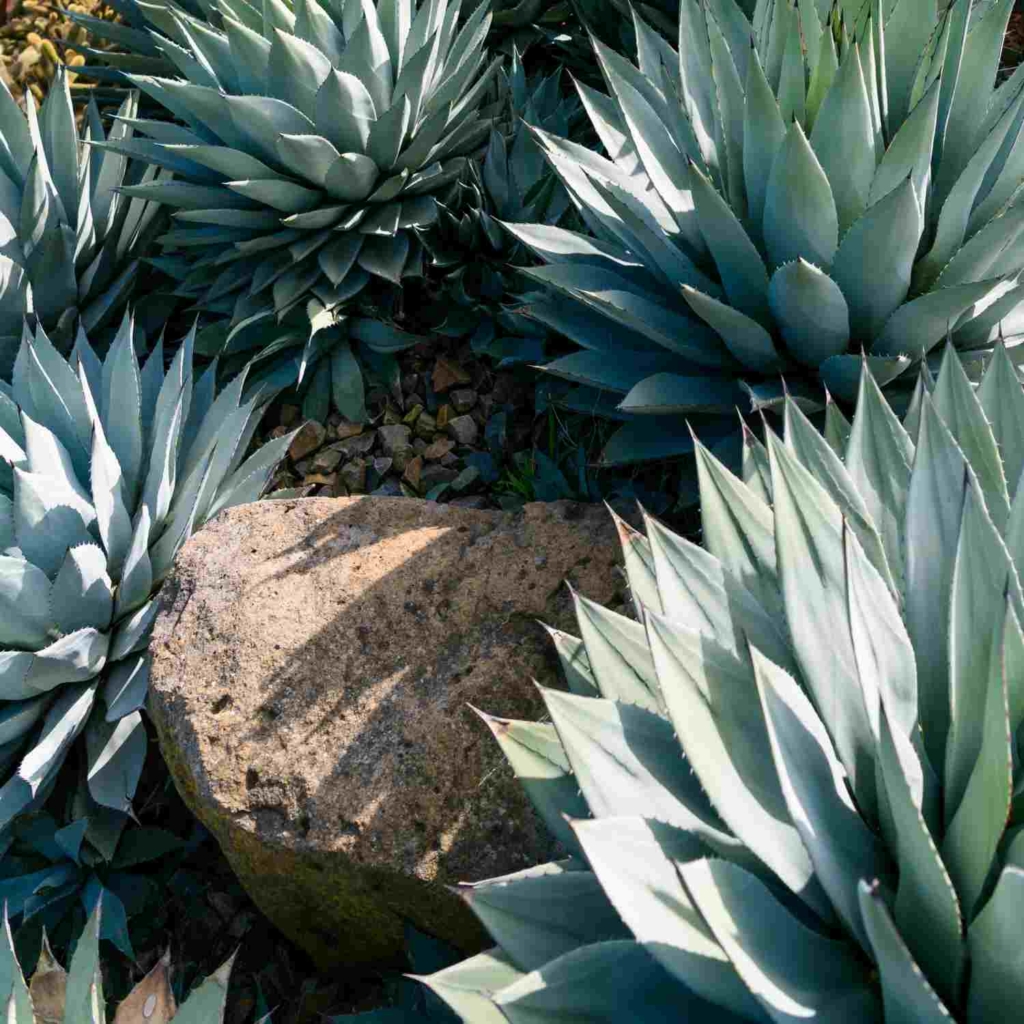
Introduction
Succulents have grow to be more and more famous in current years, thanks to their particular and captivating appearance. these flora are recognized for its potential to save water in their leaves, stems, and roots, making them tremendous picks for those who have a hectic lifestyle or have a tendency to forget to water their flora. but, with regards to selecting the right vicinity to your succulents, you would possibly marvel, “Do succulents do well in bathrooms?” In this newsletter, we can explore the suitability of succulents for bathroom environments and offer you with valuable insights on a way to successfully develop and take care of these pleasant flora to your bathroom.
Do Succulents Do Well in Bathrooms?
Succulents can thrive in diverse environments, and bathroom aren’t any exception. the bathroom’s precise situations, together with high humidity stages and low light, can mimic the succulents’ herbal habitat, making it a super region to grow those flowers. but, it’s crucial to bear in mind some factors to make certain your succulents flourish inside the rest room placing.
Understanding the Bathroom Environment
bathrooms are known for their high humidity degrees and fluctuating temperatures. those conditions may be tough for plenty flowers, as immoderate moisture can result in mould, rot, and other problems. however, positive succulent sorts have the capability to adapt and even enjoy the rest room environment.
Why Choose Succulents for Bathrooms
Succulents are capacity to store water in their leaves and stems, making them notable drought-tolerant flowers. toilets, generally characterised by low humidity tiers, can provide an ideal environment for succulents to thrive. The moisture from showers and baths can create a barely greater humid microclimate, which a few succulents can adapt to.
not handiest do succulents add a ornamental detail for your rest room, however they can also assist purify the air by absorbing pollutants and freeing oxygen. Their low-renovation nature and aesthetic enchantment lead them to a famous preference for indoor plants. however, it’s important to choose the right succulents to your rest room environment to ensure their fitness and sturdiness.
ideas for keep succulents in bathroom
if you want to keep succulents in a toilet with minimal natural mild, right here are a few ideas to help them thrive:
1. artificial lighting fixtures: installation develop lights or full-spectrum LED lights to your bathroom to provide the important light for succulents. region the lighting fixtures close to the plants to simulate daylight.
2. pick out Low-mild Succulents: choose succulent species that may tolerate low-mild situations. some examples include snake plant (Sansevieria), Zamioculcas zamiifolia (ZZ plant), and Haworthia.
three. Reflective Surfaces: vicinity mirrors or mild-coloured tiles strategically on your rest room to mirror any available light and distribute it to the succulents.
4. lavatory ventilation: Succulents choose nicely-draining soil and dislike extra humidity. ensure your lavatory has proper air flow to avoid immoderate moisture buildup. Use a fan or hold the bathroom door open to permit air movement.
5. rest room accessories: enhance your rest room with succulent-pleasant add-ons. hold air plants (Tillandsia) near the window or create a small vertical garden with succulent wall planters.
6. Watering carefully: Succulents are drought-tolerant, so be cautious now not to overwater them. bathrooms have a tendency to be more humid, so regulate your watering time table thus and allow the soil to dry out among watering sessions.
7. do not forget Terrariums: Create a mini succulent terrarium interior a tumbler container. this can assist hold higher humidity levels at the same time as nevertheless providing ok light.
consider to reveal your succulents closely and make modifications as had to make sure they get hold of the right light, humidity, and watering conditions for their most useful boom inside the rest room surroundings.
Choosing the Right Succulents for Bathrooms
Selecting the appropriate succulents for your bathroom is crucial to ensure their well-being and growth. Here are some factors to consider:
Low-Light Succulents
Opt for succulents that can thrive in low-light conditions. Some suitable options include:
- Zebra Plant (Haworthia fasciata)
- Snake Plant (Sansevieria)
- Panda Plant (Kalanchoe tomentosa)
Drought-Tolerant Succulents
Choose succulents that are known for their drought tolerance, as they can withstand longer periods between waterings. Some drought-tolerant succulents include:
- Agave
- Sedum
- Sempervivum
Compact Succulents
Consider compact succulent varieties that won’t outgrow the available space in your bathroom. Some compact options include:
- Echeveria ‘Lola’
- Crassula perforata
- Haworthia retusa
Succulents That Thrive in Bathrooms
Here are some succulents that thrive in bathrooms:
Aloe Vera (Aloe barbadensis):

- Description: Aloe Vera is a popular succulent known for its medicinal properties. It thrives in bright, indirect light and can tolerate higher humidity levels, making it an excellent choice for bathrooms.
Snake Plant (Sansevieria trifasciata):

- Description: Snake plants are well-adapted to low light conditions and can tolerate a wide range of humidity levels. They have striking, upright leaves that add an architectural element to any bathroom.
Haworthia (Haworthia spp.):

- Description: Haworthias are small succulents with unique rosette-shaped leaves. They prefer bright, indirect light and can tolerate moderate humidity levels, making them suitable for bathrooms.
ZZ Plant (Zamioculcas zamiifolia):
- Description: The ZZ plant is a hardy succulent that can thrive in low light conditions, making it an ideal choice for bathrooms with limited natural light. It can tolerate average humidity levels and requires minimal care.
Pothos (Epipremnum aureum):
- Description: Although not a true succulent, pothos is a popular trailing plant that can thrive in bathrooms. It can tolerate low light and moderate humidity levels. Pothos is known for its heart-shaped leaves and is an excellent choice for hanging baskets or shelves.
Jade Plant (Crassula ovata):

- Description: Jade plants are known for their thick, fleshy leaves and tree-like appearance. They prefer bright, indirect light and can tolerate lower humidity levels. Jade plants are easy to care for and can be a beautiful addition to bathroom spaces.
Peperomia (Peperomia spp.):
- Description: Peperomias are a diverse group of succulent plants with attractive foliage. They come in various shapes, sizes, and textures, adding visual interest to bathrooms. Peperomias prefer bright, indirect light and can tolerate moderate humidity levels.
String of Pearls (Senecio rowleyanus):
- Description: The String of Pearls is a unique trailing succulent with round, bead-like leaves. It thrives in bright, indirect light and can tolerate higher humidity levels. This succulent can create a stunning cascading effect in hanging planters.
Remember to consider the specific lighting and humidity conditions in your bathroom when choosing succulents. These recommendations can help you create a thriving succulent display in your bathroom space.
Succulents to Avoid in Bathrooms
Here are some succulents to avoid in bathrooms:
Echeveria (Echeveria spp.):

- Description: Echeverias are stunning succulents known for their rosette-shaped leaves and vibrant colors. However, they prefer dry conditions and can suffer in high humidity, making them unsuitable for bathrooms.
Lithops (Lithops spp.):
- Description: Lithops, also known as “living stones,” are unique succulents that mimic the appearance of stones. They prefer dry conditions and can be challenging to grow in the humid environment of a bathroom.
Sempervivum (Sempervivum spp.):
- Description: Sempervivums, commonly known as “hens and chicks,” are drought-tolerant succulents. While they can handle dry conditions, they are not well-suited for high humidity environments like bathrooms.
Agave (Agave spp.):

- Description: Agaves are larger succulents with rosette-shaped leaves and sharp spines. They prefer arid conditions and can struggle in high humidity. They are better suited for outdoor environments or areas with excellent ventilation.
Crassula Buddha’s Temple (Crassula pyramidalis):
- Description: Crassula Buddha’s Temple is a unique succulent with stacked, pyramid-like leaves. While it can thrive in various conditions, it prefers drier environments and may not fare well in bathrooms with high humidity.
Sedum Adolphii (Sedum adolphii):
- Description: Sedum Adolphii, also known as Golden Sedum or Golden Glow, is a popular succulent with yellow-green leaves. While it can tolerate a range of conditions, it prefers well-drained soil and is not the best choice for bathrooms with high humidity.
When choosing succulents for your bathroom, it’s essential to consider their preferred growing conditions. By avoiding succulents that are not well-suited for high humidity environments, you can ensure the success and longevity of your bathroom succulent display.
Benefits of Succulents in Bathrooms
Improved Air Quality
Succulents are known for their air-purifying properties. They absorb carbon dioxide and release oxygen, helping to improve the air quality in enclosed spaces such as bathrooms. This is especially beneficial as bathrooms often lack proper ventilation.
Increased Humidity
The high humidity levels in bathrooms can be advantageous for succulents that require a more humid environment. While some succulents prefer drier conditions, there are varieties that thrive in higher humidity levels. These plants can benefit from the moisture in the air, reducing the need for frequent watering.
Aesthetically Pleasing
Adding succulents to your bathroom can enhance its aesthetic appeal. Their unique shapes and vibrant colors can complement various bathroom styles, from modern to bohemian. They bring a touch of nature indoors, creating a serene and relaxing ambiance.
Choosing the Right Succulents
To ensure the success of your bathroom succulent garden, it is essential to choose the right types of succulents that can thrive in the specific conditions of your bathroom. Here are some key factors to consider:
Low Light Requirements
Bathrooms often have limited natural light, so selecting succulents for dark bathroom so that can tolerate low light conditions is crucial. Opt for varieties such as Snake Plant (Sansevieria), Zebra Plant (Haworthia), or Aloe Vera, as they are known for their ability to thrive in low-light environments.
Tolerating Fluctuating Temperatures
Bathrooms can experience temperature fluctuations, especially if they are frequently used. Look for succulents that can withstand these changes without compromising their health. Jade Plant (Crassula ovata), Echeveria, and Haworthia are some examples of succulents that can adapt well to varying temperatures.
Dealing with High Humidity
Choose succulents that can handle higher humidity levels without succumbing to rot or other moisture-related issues. Some suitable options include Hoya, Rhipsalis, and Peperomia. These succulents have evolved to thrive in tropical and humid environments.
Placement and Lighting
Proper placement and lighting are crucial for the success of your bathroom succulent garden. Place your succulents near windows or areas that receive indirect sunlight, as they still require some light to thrive. Consider using translucent curtains or frosted glass to filter the light if your bathroom faces direct sunlight.
Watering and Drainage
Watering succulents in bathrooms requires attention to prevent overwatering and promote proper drainage.
Balanced Watering
While succulents are drought-tolerant, they still need some water to thrive. Monitor the moisture levels in the soil and water your succulents only when the top inch of soil feels dry. Avoid overwatering, as it can lead to root rot and other issues.
Proper Drainage
To prevent water from accumulating in the pots, ensure that your succulent containers have drainage holes. Excess water should be able to escape freely, allowing the roots to breathe and preventing waterlogged soil.
Preventing Mold and Rot
The high humidity levels in bathrooms can create a conducive environment for mold and rot. To prevent these issues and maintain the health of your succulents, consider the following tips:
Adequate Air Circulation
Ensure that your bathroom has proper air circulation. Use exhaust fans or open windows regularly to allow fresh air to flow in. Good air circulation helps to reduce excessive moisture and prevent the development of mold.
Avoiding Overwatering
Overwatering is one of the main causes of succulent problems, including mold and rot. Be cautious and water your succulents sparingly, allowing the soil to dry out between watering sessions. Remember, succulents are adapted to survive in arid conditions and prefer drier soil.
Common Challenges and Solutions
While succulents can thrive in bathrooms, they may still face some challenges. Here are a few common issues and their solutions:
Insufficient Light
If your bathroom lacks sufficient natural light, consider using artificial grow lights. LED grow lights can provide the necessary light spectrum for succulents without emitting excessive heat. Position the lights near your succulents to ensure they receive adequate light for growth.
Fungal Infections
The high humidity in bathrooms can make succulents more susceptible to fungal infections. If you notice signs of mold, such as fuzzy growth or black spots on your succulents, take immediate action. Remove the affected parts and adjust the watering routine to reduce moisture levels.
Temperature and Humidity
Bathrooms often experience fluctuating temperature and humidity levels due to showers and baths. Succulents generally prefer warmer temperatures ranging from 65°F to 85°F (18°C to 29°C). However, they can tolerate slightly cooler or warmer conditions depending on the species.
Watering and Drainage
Bathrooms are typically more humid, which can affect the watering needs of succulents. Overwatering is a common issue, as succulents prefer well-draining soil and minimal water. Proper drainage and watering techniques are crucial to prevent root rot and other water-related problems.
Care Tips for Succulents in Bathrooms
To ensure the health and vitality of your bathroom succulents, follow these care tips:
Temperature and Humidity Management
Maintain a consistent temperature range suitable for succulents, preferably between 65°F to 85°F (18°C to 29°C). Avoid exposing them to drafts or extreme temperature fluctuations. Monitor the humidity levels and consider using a dehumidifier if necessary.
Light Requirements
Place your succulents in the brightest spot available within the bathroom. If natural light is insufficient, supplement it with artificial grow lights to provide the necessary light energy for their growth.
Watering Techniques
Water your succulents sparingly, allowing the soil to dry out between waterings. Avoid overwatering, as succulents are prone to root rot. Use the “soak and dry” method, thoroughly wetting the soil and allowing it to dry completely before watering again.
Soil and Drainage Considerations
Use well-draining soil specifically formulated for succulents or create your own by combining regular potting soil with perlite or coarse sand. Ensure that your pots have drainage holes to prevent water from accumulating.
Fertilizing Succulents
Succulents have low nutrient requirements. Fertilize them sparingly during the growing season using a balanced, water-soluble fertilizer diluted to half-strength. Avoid fertilizing during the dormant winter period.
Conclusion
In conclusion, succulents can thrive in bathroom environments with proper care and consideration. By understanding their unique needs and selecting suitable species, you can create a stunning and low-maintenance succulent display in your bathroom. Remember to monitor temperature, humidity, light, and watering to ensure the health and longevity of your succulents. Enjoy the beauty and tranquility these resilient plants bring to your bathroom oasis.
FAQs
- Is it ok to keep succulent in the bathroom? While many succulents can thrive in bathrooms, some varieties may struggle with high humidity levels. It’s important to choose succulents that are better adapted to bathroom environments.
- What are the best lighting conditions for succulents in bathrooms? Succulents require bright, indirect light. Placing them near windows or using grow lights can provide the necessary lighting conditions.
- How often should I water my succulents in the bathroom? Succulents in bathrooms typically require less frequent watering due to higher humidity levels. Allow the soil to dry out completely between waterings.
- Can I use a humidifier to create a suitable environment for succulents in the bathroom? While succulents appreciate some level of humidity, it’s important to strike a balance. Excessively high humidity levels can lead to issues like root rot. Monitor the humidity and adjust accordingly.
- Are there any other alternatives to succulents for bathroom plants? Yes, there are several other plant options for bathrooms, such as ferns, orchids, and peace lilies. Consider plants that thrive in higher humidity levels.
- Can all succulents survive in bathrooms? Not all succulents thrive in bathroom conditions. Some succulents can tolerate low-light and high-humidity environments better than others.
- How often should I water my bathroom succulents? Water your bathroom succulents only when the soil has dried out completely. It’s important to avoid overwatering and allow the roots to breathe.
- Do succulents need direct sunlight? Succulents prefer bright, indirect light. Direct sunlight for prolonged periods can cause sunburn and damage the leaves.
- What should I do if my succulent is stretching? Stretching occurs when succulents don’t receive enough light. Move your succulent to a brighter location or provide supplemental grow lights to prevent further stretching.
- Can I use a bathroom window sill for succulents? If the bathroom window sill receives sufficient light and isn’t exposed to drafts or extreme temperature fluctuations, it can be a suitable spot for succulents.
- How do I prevent mold growth in my bathroom succulents? To prevent mold growth, ensure proper airflow, avoid overwatering, and maintain a consistent temperature and humidity level. You can also use a fan or dehumidifier to reduce excess moisture.
- Can I propagate succulents in the bathroom? Yes, you can propagate succulents in the bathroom. Follow standard propagation methods such as leaf or stem cuttings, and provide suitable conditions for successful rooting.
- Do succulents improve air quality in bathrooms? Succulents, like other plants, can help improve air quality by absorbing carbon dioxide and releasing oxygen. However, their impact on air quality in bathrooms may be limited due to the smaller space.
- Can I use artificial light for bathroom succulents? Yes, you can use artificial grow lights to supplement natural light for your bathroom succulents. Choose lights with a spectrum similar to sunlight for optimal growth.
- What are some suitable succulents for bathrooms? Some suitable succulents for bathrooms include Zebra Plant, Snake Plant, Panda Plant, and various Haworthia and Sansevieria species.
- Are succulents safe for pets in bathrooms? While most succulents are non-toxic to pets, it’s best to keep them out of reach to prevent accidental ingestion. Some succulents may still cause mild stomach upset if consumed in large quantities.
- How do I repot succulents in the bathroom? When repotting succulents, choose a slightly larger pot with drainage holes. Gently remove the succulent from its current container, loosen the roots, place it in the new pot, and fill with well-draining soil.
- Can I use a bathroom for succulent propagation? Yes, bathrooms can provide a suitable environment for succulent propagation. The slightly higher humidity levels can aid in the rooting process.
- What are the signs of overwatering in succulents? Signs of overwatering in succulents include yellowing or translucent leaves, mushy stems, and a rotting smell from the soil.
- How can I control humidity levels in the bathroom? To control humidity levels, use a dehumidifier or improve ventilation by opening windows or using exhaust fans. Avoid overcrowding your bathroom with too many plants.
- can succulents live in a windowless bathroom? No, succulents generally cannot thrive in a windowless bathroom. Succulents require a good amount of sunlight to photosynthesize and grow properly. Without access to natural light, they may become weak, leggy, and eventually die. Additionally, the humidity levels in a bathroom may not be suitable for most succulents, as they prefer well-draining soil and drier conditions. If you’re looking to have plants in a windowless bathroom, it’s better to consider low-light tolerant plants or utilize artificial lighting to provide the necessary light for plant growth.
